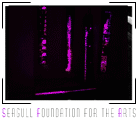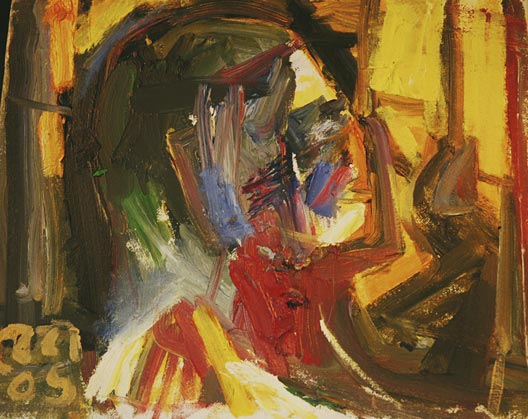
Selections from ‘Other writings from Reba Hore, 1996’
“What is art all about? It is self-expression. That self being a part of society, a part of the world, it is naturally related to the world. However abstract, however remote it may seem, this relation is always there. The relationship of an individual – me – to the whole world is in some strange way in my thought-processes, my work, be it painting or some kind of activity. My painting, however, is personal. Not much message there. Rather a response, almost a conversation, with my surroundings and my own thought process.”
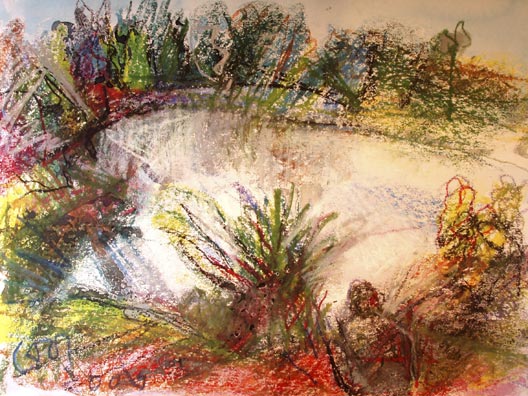
“My work is spontaneous in nature. The shapes and colours usually come easily without much preplanning. Something I have seen, been moved by, a poignant memory, a turn of a head, even, sets me off. Colour masses come to my mind’s eye. Construction starts on the core theme. Shapes flow and also change. One mass needs a different space-relation. One colour might call for another. The medium takes a hand. Fervour grows. A tumult. Suddenly any more would be incoherence.
“As the core theme develops in colour construction, the image tends to take an abstract shape. The colour strokes often try to free themselves from the shape contours. The shape-masses try to hold their own. This breaking out and holding down is inherent in the work. The image is not lost altogether. It peeps through and becomes a part of all this.”
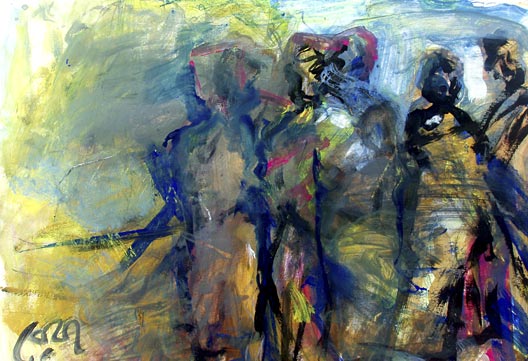
“I work regularly, like a routine. Like the women who sew kanthas, like craftsmen who spend regular stretches of time working at their craft. I get up in the morning and get busy. I must work for two or three hours, then take a break, then do the cooking — like this, I regulate my life. I find the very process of painting fulfilling, exhilarating, a kind of release. Without it I become lost, irritable, fretful and very, very empty. To me it is solace, and escape also, and a vindication of life. It’s not that I consciously use these ideas in my work. They come in unconsciously.”
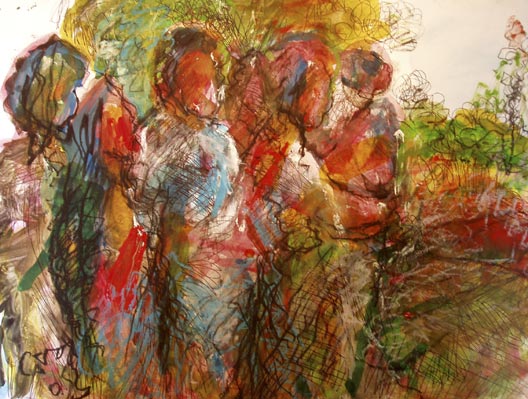
—of belief in an ultimate humanity
“After all, life is great fun. Life is larger than death. There is trauma, there is pain, there is destruction, but I cannot believe things will end like that. Somehow I try to believe that out of all this, something very beautiful is coming up, and everyone, even in trauma, has something to live for. Because I feel that in spite of all this trauma, children still grow up, buds flower out, and life goes on. In spite of pain there is a lot of laughter, love, compassion. Even when I shall not be here, life will go on.”
Extracts from the writings of Reba Hore, reproduced with permission from the catalogue of her 1996 Calcutta exhibition of paintings, drawings and terracottas, organised by Naveen Kishore and the Seagull Foundation for the Arts. ↩
Selections from ‘Reba Hore in conversation with Naveen Kishore’
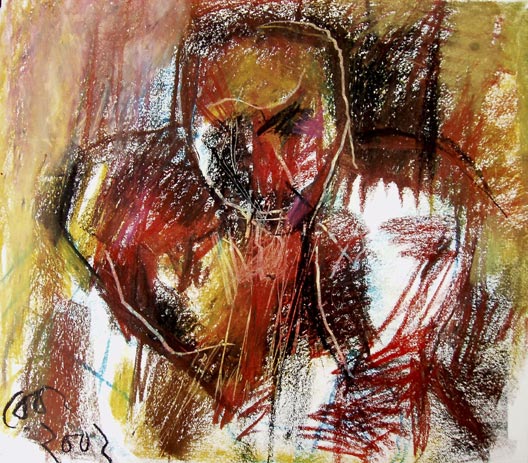
“What does it mean to be ‘an artist’ in these dark times?”
“An artist is not so very different from a sensitive human being.
S/he has to be the one whether the times are dark or not.”
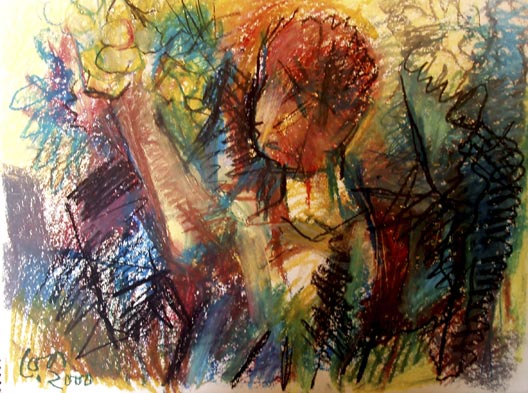
“Is there hope in this world any longer?
If so what is the ‘colour of hope’?”
“Definitely, yes. Red, orange, blue and green.”
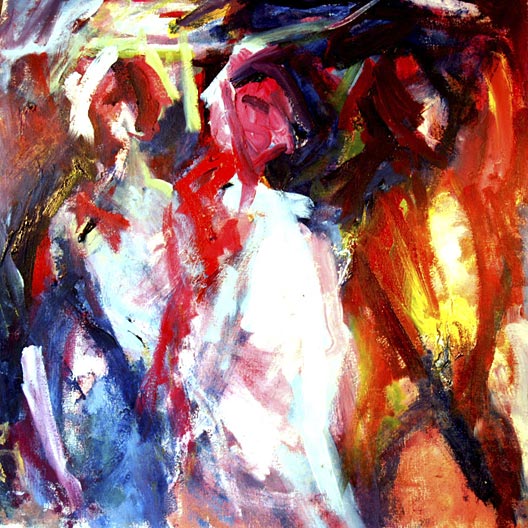
“Which do you prefer: sitting in the sunlight or in the shadows, so as to be able to watch ‘life go by in the fading light’?”
“Usually I like to be the onlooker watching. But sometimes I jump out, so to say or, rather, in.”
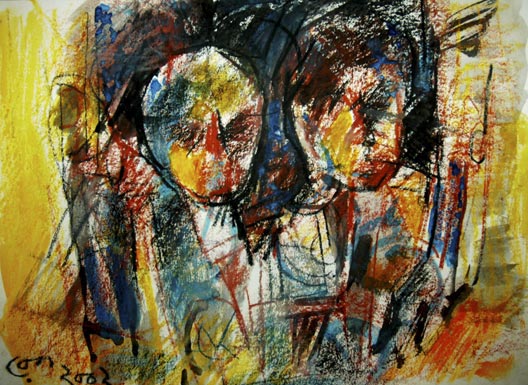
“Do you think art should disturb in a persuasive, even compulsive kind of way? Do you want an art that latches on to your mind and refuses to let go? Do you want an art that infiltrates? causes breathlessness? nausea, even? ‘Neutrality makes for the worst kind of art’ – do you agree?”
“All this is irrelevant. There is art expression that holds, smites, soothes, infiltrates. It is not a question of my wanting.”
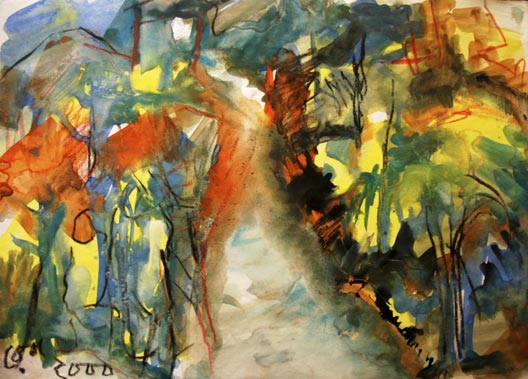
“Do you know
how to sow seeds?”
“Yes.”
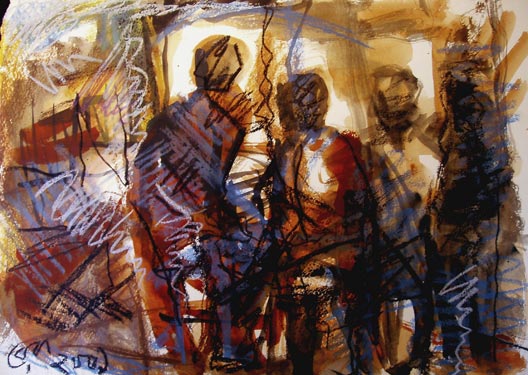
“Do you know
how to stitch? and sew?”
“Not very well.”
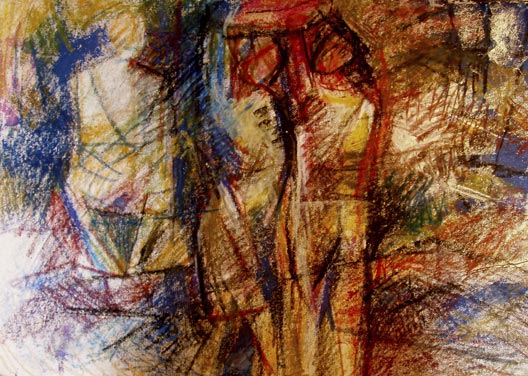
“Do you know
how to light a fire?”
“Yes.”
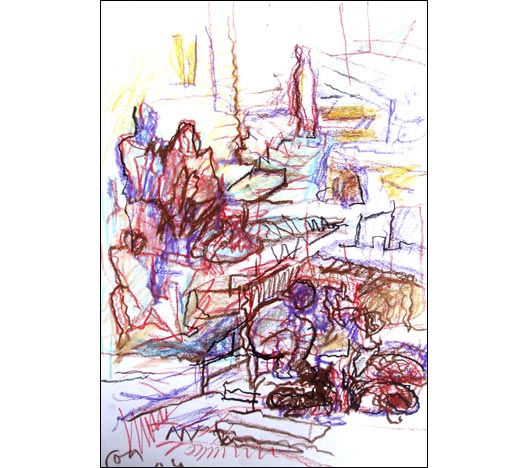
“Do you know
how to put it out?”
“Only a small one.”
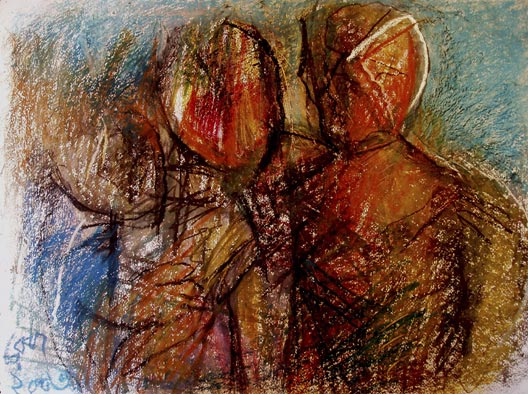
“How far would you go to seek purity in art? What is purity? What is difference? difference not for differences’ sake, but as a blow to sameness. How different is it from ‘different’? Is the ‘different in art’ often alien to our experience? or is it always in some manner linked to our ‘lived experience’?”
“To me purity is total involvement. And difference is linked to ‘lived experience’ and personal attitude, talent, etc.”
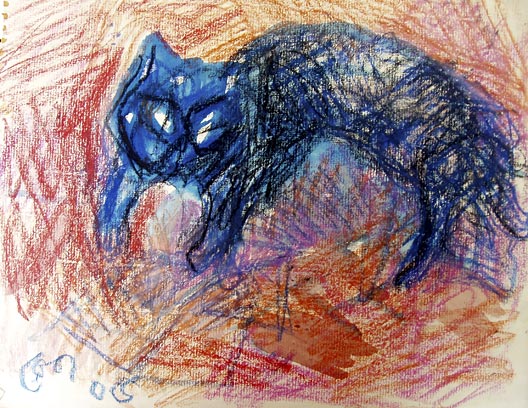
“Do you see eye to eye with yourself?”
“Not always.”
Extracts from an exchange between the artist and Naveen Kishore, 2006. ↩
Biographical information
- Born in 1926 in West Bengal.
- Educated at Calcutta University and Calcutta College of Art, graduating from Calcutta University in 1946 and Calcutta College of Art in 1949.
- Lived and worked in Calcutta, New Delhi and Santiniketan. Continues to live and work in Santiniketan.
- Has participated in major national and international exhibitions.
Solo shows include Delhi in 1960-63, 1967, 1989, 1992, 1993; Calcutta in 1970-73, 1979, 1992, 1993; Santiniketan in 1968 and 1976.
Also joint shows with her husband, Somnath Hore 1956-58. - Has worked over the years in oils, emulsions, wax and terracotta.
- Collections at Lalit Kala Academy, New Delhi; Art Heritage, New Delhi; Netherlands Embassy, New Delhi; Punjab Museum, Bahai Museum, Birla Academy of Art and Culture, Calcutta and private collections in India and abroad. ↩
